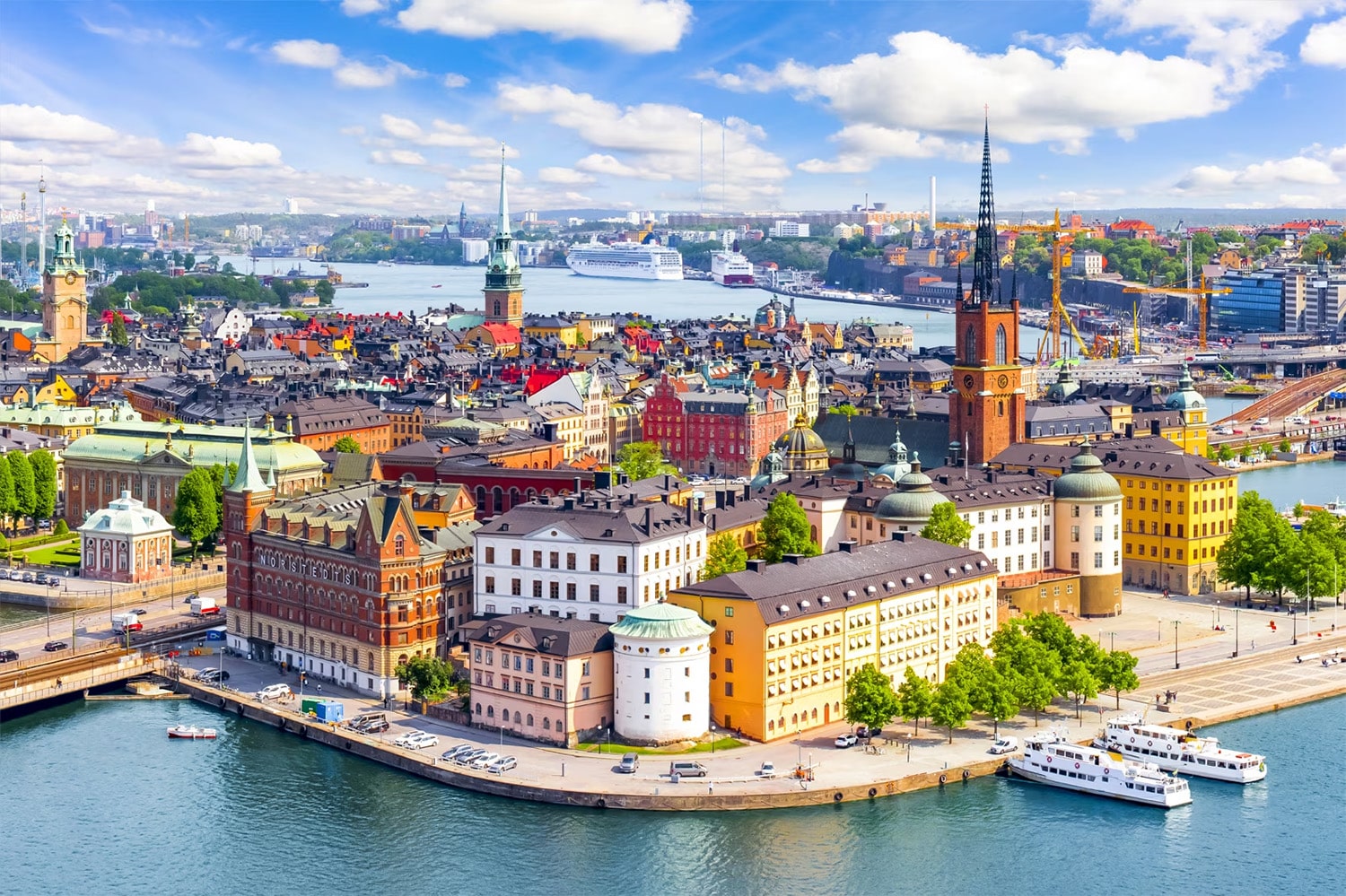
32 interesting facts about Stockholm
- 👁️ 429
Stockholm, the capital city of Sweden, is not only the political and economic center of the country but also a vibrant hub of culture, history, and innovation. Situated on the east coast of Sweden, it spreads across 14 islands connected by over 50 bridges on the extensive Baltic Sea archipelago. Known for its clean and open waters, beautiful architecture, and a high standard of living, Stockholm is often referred to as one of the world’s most beautiful cities. Its rich history combined with its modern and progressive ethos makes Stockholm a fascinating place to explore. Here are 32 interesting facts about Stockholm that highlight its uniqueness and significance.
- Stockholm has been the political and economic center of Sweden since the 13th century.
- The city is built on 14 islands and is known as the “Venice of the North.”
- Stockholm is home to the Nobel Prize ceremonies and the Nobel Museum.
- The Stockholm archipelago consists of about 24,000 islands and islets.
- The first part of the name “Stockholm” means ‘log’ in Swedish, and it’s believed to refer to the logs driven into the waters around the city for fortification purposes.
- The Royal National City Park in Stockholm is the world’s first legally protected “national urban park.”
- Gamla Stan, the old town of Stockholm, dates back to the 13th century and is one of Europe’s best-preserved medieval city centers.
- The Stockholm Metro is known as the world’s longest art gallery, with beautifully decorated stations.
- The Vasa Museum in Stockholm is built around a 17th-century warship that sank on its maiden voyage in 1628.
- Stockholm was the host of the 1912 Summer Olympics.
- The city’s annual Stockholm Marathon is one of the biggest in Europe, with thousands of runners from around the world.
- ABBA, one of the most famous pop groups ever, originated in Stockholm.
- The city has over 100 museums, making it one of the highest concentrations of museums in the world.
- The Stockholm City Hall, where the Nobel banquet is held, took 12 years to build and was completed in 1923.
- Stockholm has a significant focus on sustainability and aims to be fossil fuel-free by 2040.
- The Ericsson Globe in Stockholm is the largest hemispherical building on Earth.
- Stockholm was the first city to receive the award for European Green Capital in 2010.
- The city’s subway system extends over 110 kilometers, making it one of the longest in Europe.
- Skansen, located in Stockholm, is the world’s oldest open-air museum and zoo, opened in 1891.
- The Icebar in Stockholm is the world’s first permanent ice bar; the interior, including the glasses, is made entirely of ice.
- Djurgården Island is one of the locals’ favorite recreation spots and hosts several of the city’s top museums and attractions.
- The Kungsträdgården Park, or King’s Garden, is a popular gathering place in the center of Stockholm and the site of outdoor concerts and events in the summer.
- The Nobel Library in Stockholm holds around 200,000 volumes related to science, literature, and peace.
- The Swedish monarchy, while largely ceremonial, still resides in the Royal Palace in Stockholm, one of the largest palaces in Europe with over 600 rooms.
- The National Museum in Stockholm holds Sweden’s largest collection of art with over 16,000 paintings and 30,000 objects of art handicraft.
- The Economy Museum – Royal Coin Cabinet showcases the history of money and economic history in Sweden.
- The Kaknäs television tower is the highest structure in Scandinavia.
- Stockholm hosts the annual Stockholm Pride, the largest pride festival in Scandinavia.
- The city’s water is so clean that you can catch salmon right in the middle of Stockholm.
- In 1628, the entire population of Stockholm was around 15,000 people – today, it’s over 900,000.
- During the early 20th century, the Stockholm Telephone Tower connected about 5,000 telephone lines, making it a peculiar and historic symbol of early telecommunications.
- The Medieval Week on Gotland, near Stockholm, is one of the most significant historical reenactment festivals in Europe.
Stockholm’s rich tapestry of history, culture, and modernity makes it a unique jewel in Scandinavia. From its archaic roots in Gamla Stan to its ambitious environmental goals, Stockholm blends the past with the future in a fascinating way. These facts not only illustrate Stockholm’s global significance but also explain why it remains a top destination for tourists and a model city for urban planning and sustainability.











